Phenolic extract from Ocimum basilicum restores lipid metabolism in Triton WR-1339-induced hyperlipidemic mice and prevents lipoprotein-rich plasma oxidation
Ilham Touiss,Saloua Khatib,Oussama Bekkouch,Souliman Amrani,Hicham Harnaf
Laboratory of Biochemistry and Biotechnologies,Department of Biology,Faculty of Sciences,60000 Oujda,Morocco
Abstract In this study we investigated the hypolipidemic and anti-lipoprotein-oxidation activities of phenolic extract from sweet basil a popular culinary herb.The hypolipidemic activity was studied in mice model injected intraperitoneally with Triton WR-1339 at a dose of 200 mg/kg body weight.The animals were grouped as follows:normolipidemic control group (n=8),hyperlipidemic control group (n=8) and phenolic extract-treated group(n=8)at a dose of 200 mg/kg body weight.After 7 h and 24 h treatment,the oral administration of the phenolic extract exerts a significan reduction of plasma total cholesterol,triglycerides and LDL-cholesterol concentrations(P<0.001).On the other hand,we demonstrated that the phenolic extract prevents plasma lipid oxidation by 16%(P<0.001),20%(P<0.001),32%(P<0.001)and 44%(P<0.001)at a doses of 10,25,50 and 100 μg/mL,respectively.The results were compared with ascorbic acid used as standard synthetic antioxidant.HPLC analysis shows that the extract contains 4 major phenolics and is especially rich in rosmarinic acid.This findin indicates that the phenolic extract might be beneficia in lowering hyperlipidemia and preventing atherosclerosis.
Keywords:Sweet basil;Phenolic acids;Hypocholesterolaemia;Hypotriglyceridaemia;Lipoprotein-rich plasma oxidation
1.Introduction
Hypercholesterolemia and oxidative stress represent the major risk factors for the development and progression of atherosclerosis and related cardiovascular diseases [1,2].A number of experimental studies have clearly demonstrated that high plasma LDL-cholesterol levels are positively correlated with atherosclerosis process [3].However,HDL-cholesterol is an antiatherogenic fraction [4].In addition,a long-standing relationship exists between high plasma triglyceride levels and cardiovascular disease[5].
Lifestyle and dietary habits are crucial in the prevention of some human diseases such as hyperlipidemia and atherosclerosis.Indeed,the Mediterranean diet rich in fruits and vegetables is negatively correlated with cardiovascular risk [6].Thus,the management of hyperlipidemia needs a strategy based on diet control and hypolipidemic treatment[7].In this context,it is very important to search functional foods and dietary phytochemicals with hypolipidemic and antioxidant virtues,because hyperlipidemia and low density lipoprotein oxidation are known to be the key process in the physiopathology of atherosclerosis which can be treated by hypolipidemic and antioxidant therapies[3].
Sweet basil(Ocimum basilicum)from Lamiaceae family is an aromatic plant cultivated as a culinary herb,condiment or spice and as food aromatizing [11].In the east of Morocco,sweet basil is not only used for cooking but also considered as medicinal plant to treat hyperlipidaemia,atherosclerosis and related pathologies.Recently,sweet basil has been proved to demonstrate a number of biological activities,such as antidiabetic[12]and anti thrombotic effects[13].
In the present study we demonstrated that the phenolic acid-rich extract fromO.basilicumexerted a significan hypolipidemic activity in Triton WR-1339-induced hyperlipemic mice and prevents efficientl against lipoprotein-rich plasma oxidation.This results could be used to develop natural antiatherogenic treatments from sweet basil.
2.Materials and methods
2.1.Preparation of basil phenolic extract
O.basilicumwas purchased from an herbalist in Oujda city(Morocco)and authenticated by a botanist,a voucher specimens has been deposited at the department of Biology(Collection n◦LO15).The dried leaves of the plant were ground into a fin powder and treated withn-hexane in a Soxhlet extractor during 16 h to remove chlorophyll,xanthophylls and all lipid soluble substances.The marc obtained was dried and re-extracted with 80%aqueous methanol(16 h).The extract was filtere and the solvent was evaporated at 50◦C under reduced pressure.The concentrate was dissolved in distilled water and washed several times withn-hexane to remove residues of chlorophyll.To separate phenolic acids,the aqueous layer was partitioned withn-butanol.The obtained extract was filtere and evaporated at 50◦C under reduced pressure.The extraction yielded 7%.
2.2.Determination of total phenol content
Total polyphenols ofO.basilicumextract were determined by the Folin–Ciocalteu procedure[14]with some modifications 0.5 mL of samples was mixed with 0.25 mL of Folin–Ciocalteu reagent and 0.5 mL of the sodium carbonate solution 20%.The mixturewasstirredandadjustedto5 mLwithdistilledwater.The blue coloration was developed for 30 min in the dark.Then,it was measured spectrophotometrically at 725 nm against a blank.
The content of total polyphenols was calculated as rosmarinic acid equivalent from the calibration curve of rosmarinic acid standard solutions and expressed as mg rosmarinic acid/g dry plant extract.All measurements were done in triplicate.
2.3.HPLC analysis of phenolic extract from sweet basil
HPLC analysis of the basil phenolic extract was carried out on an Agilent 1100 series chromatograph(Agilent,Palo Alto,CA)with a Diode Array Detector,using an Inerbil ODS II reverse phase (RP18) analytical column (250×4,6 mm,particle size 5 μm).
The extract (20 μl,1 mg/mL in methanol) was separated at 30◦C at a f ow rate of 1 mL/min using the following gradient of aqueous orthophosphoric acid(pH3)(A)and acetonitrile(B):0–5 min:0%B,5–7 min:0%–5%B,7–10 min:5%–7%B,10–15 min:7%–10% B,15–20 min:10%–15% B,20–25 min:15%–18% B,25–30 min:18%–20% B,30–33 min:20%–25%B,33–38 min:25%–28% B,38–42 min:28%–34% B,42–45 min:34%–38%B,45–65 min:38%–45%B,65–75 min:45%–55%B,75–85 min:55%–0% B.The chromatogram was recorded at 280 nm.Compounds were identifie by their retention times and UV–vis spectra using a database of standard phenolics.
2.4.Animals and treatments
2.4.1.Experimental animals
Twenty four adult male albinos mice,aged 5 weeks(25–30 g),bred in the animal house of the Department of Biology(Faculty of Sciences,Oujda)were provided access only to water during the experimental duration.Their housing was maintained at a temperature of 22±2◦C with a 12 h light–dark cycle.Animal maintenance and handling were in accordance to the accepted standard guidelines for use oflaboratory animals.
2.4.2.Experimental schedule
Triton WR-1339(Tyloxapol,Sigma–Aldrich,USA)was dissolved in normal saline(pH 7.4).The experimental mice were fasted overnight and divided into three groups of eight animals each:
Normolipidemic control group(NCG):injected with normal saline(pH 7.4)and gavaged with distilled water;
Hyperlipidemic control group (HCG):injected with Triton WR-1339(200 mg/kg BW)and gavaged with 4%aqueous DMSO solution;
Phenolic extract treated group (PTG):injected with Triton and gavaged with the extract at a dose of 200 mg/kg BW dissolved in 4%aqueous DMSO.
After 7 h and 24 h of treatments,blood was taken from the retro-orbital sinus of animals after brief anaesthesia with diethyl ether.The blood samples were immediately centrifuged at 2500 r per min for/10 min and the was used for lipid analysis.
2.5.Dosage of plasma total cholesterol and triglycerides
Total cholesterol was analyzed enzymatically using Bio sud Diagnostici Kits(Italy);10 μL of plasma were mixed with 1 mL of buffered enzymatic solution.The coloured quinoneimine produced was measured at 510 nm.Triglycerides in plasma were also quantifie by an enzymatic method using Bio Sud Diagnostici kits(Italy).Briefl,10 μl of plasma were added to 1 mL of enzymatic solution to develop a chromophore which is spectrophotometrically measured at 540 nm.
2.6.Determination of plasma HDL and LDL-cholesterol
Plasma HDL-cholesterol was assessed after precipitation of other lipoprotein (LDL and VLDL) using a mixture of phosphotungstic acid and MgCl2(Sigma Diagnostic kit,Inc.,USA).Briefl,20 μl of plasma were added to 10 μl of the mixture.10 μl of supernatant were used to analyse cholesterol as described above by the same method used to determine total cholesterol.
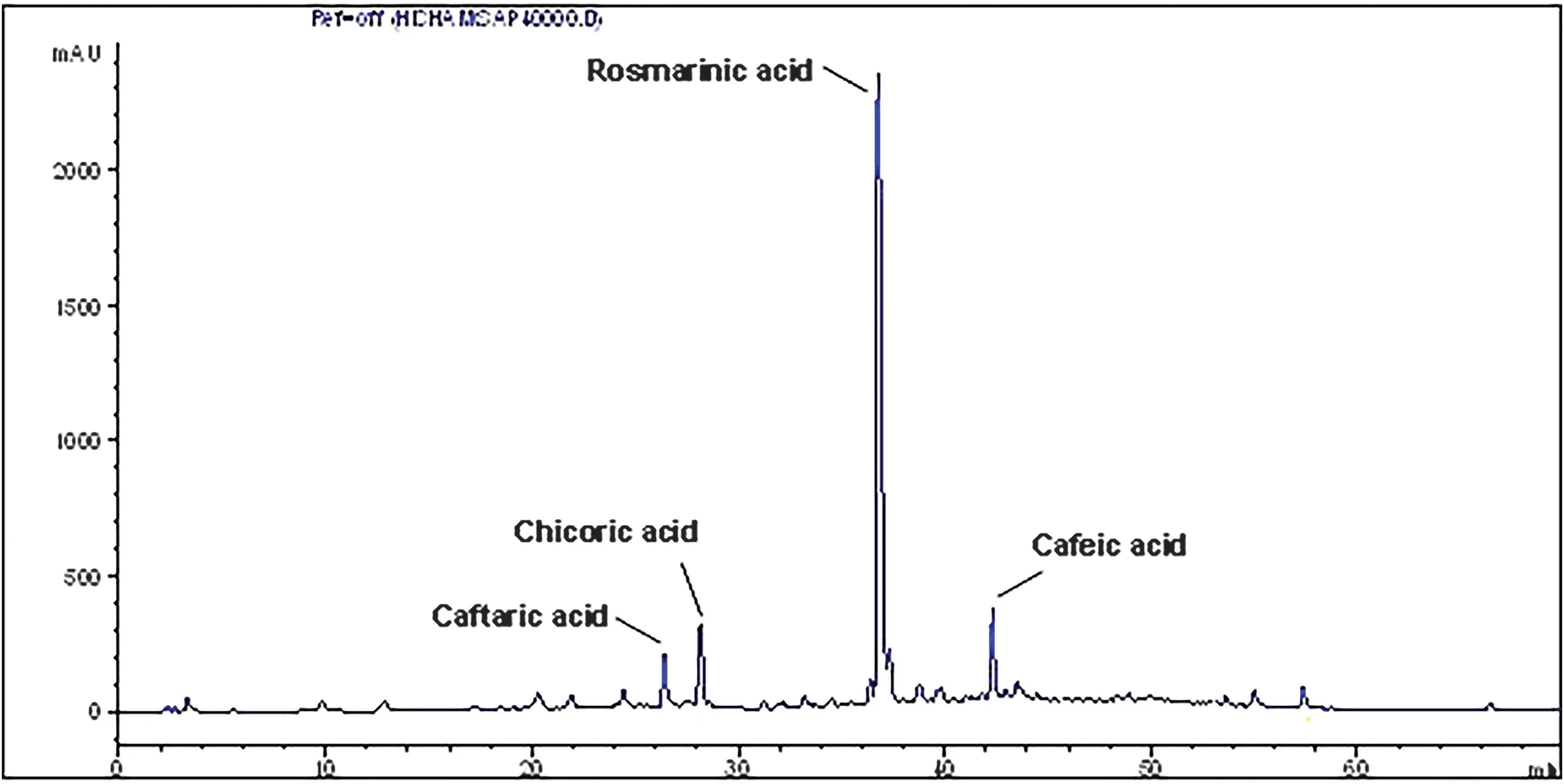
Fig 1.HPLC analysis of phenolic extract from Ocimum basilicum.
The plasma LDL-cholesterol was calculated using the Friedwald formula[15]:
LDL-Cholesterol = Total cholesterol −[HDL-Cholesterol+(triglycerides/5)].
2.7.Determination oflipoprotein-rich plasma oxidation
The thiobarbituric acid reactive substances(TBARS)levels were analysed as marker of plasma lipoprotein oxidation according to the method described by Park et al.[16].Lipoprotein-rich plasma used as substrate for oxidative process was obtained from mice injected with Triton WR-1339 at a dose of 600 mg/kg body weight for 24 h,the plasma contains 100±8.5 mg/dL of LDL-cholesterol (analysed by enzymatic kit as described above).In the control tube,lipoprotein-rich plasma(40 μl)was incubated with distilled water only.In a second control tube,lipoprotein-rich plasma(40 μl)was incubated with 10 μl of copper sulphate(CuSO4·5H2O)solution(0.33 mg/mL).In the third assay,lipoprotein-rich plasma(40 μl)was incubated with 10 μl of copper sulphate and the phenolic extract was added at 10,25,50 and 100 μg/mL.The preparations were mixed vigorously and incubated 24 h at 30◦C.Then,100 μl of 8.1% (w/v) sulphate dodecyl sodium (SDS) was added to each assay.The mixture was stirred and incubated for 60 min at room temperature.Each tube was added of 250 μl of 20%trichloroacetic acid(pH 3.5)and 250 μl of 0.8%(w/v)thiobarbituric acid(TBA),the reaction mixture was heated at 95◦C for 60 min.After cooling,1 mL ofn-butanol was added and the tubes were vortexed.The solution was centrifuged at 4500 r per min for 15 min.The absorbance of the coloured layer was recorded at 532 nm.The amounts of TBARS (thiobarbituric acid reactive substances) were calculated and expressed as 1,1,3,3-tetramethoxypropane equivalent from the calibration curve of standard solutions.The ascorbic acid was used as standard known antioxidant.All measurements were done in triplicate.
2.8.Statistical analysis
Data were analysed using Student’s t-test and one-way ANOVA and differences with P values less than 0.05 were considered statistically significant The results are expressed as mean±SEM.
3.Results
3.1.HPLC analysis of basil phenolic extract
The determination of total phenol content showed thatO.basilicumextract is rich in phenolics,the amount was 174.39±0.92 mg rosmarinic acid equivalent/g dry extract.The Fig.1 depicts the HPLC chromatogram of the basil extract.We identifie four phenolic acids:caftaric acid,chicoric acid,rosmarinic acid and cafeic acid.
3.2.Induction of hyperlipemia by Triton WR-1339
The intraperitoneal injection of Triton resulted in a marked increase in plasma lipid concentrations.Total cholesterol levels in Triton-injected mice were statistically higher than those in control after 7 h (+175%; P<0.001) and 24 h (+133%;P<0.001).Triglyceride concentrations were also significantl elevated in Triton-injected mice comparatively to the control.The levels were increased by 387% (P<0.001) after 7 h treatment and 107%(P<0.001)after 24 h(Figs.2 and 4).
On the other hand,the Triton produced no statistically significan changes in plasma HDL-cholesterol after 7 h and 24 h treatment.However,LDL-cholesterol was increased by+830%(P<0.001) and +495% (P<0.001) after 7 h and 24 h,respectively(Figs.3 and 5).

Fig.2.Effect of basil phenolic extract on mice total cholesterol and triglycerides after 7 h treatment.
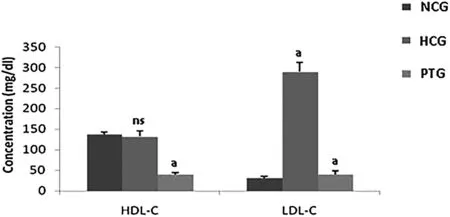
Fig.3.Effect of basil phenolic extract on mice plasma HDL and LDLcholesterol after 7 h treatment.
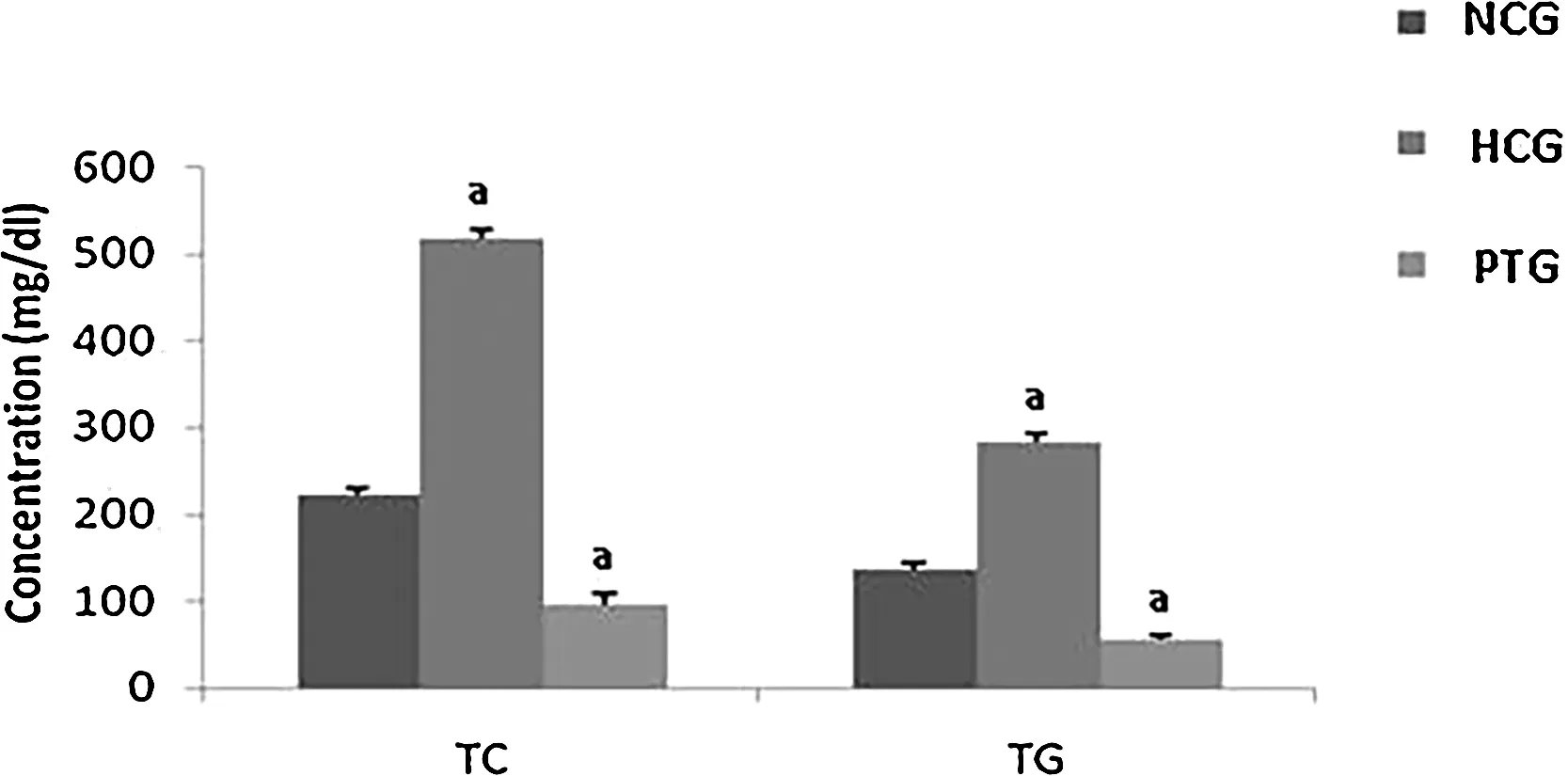
Fig.4.Effect of basil phenolic extract on mice total cholesterol and triglycerides after 24 h treatment.
3.3.Effect of basil phenolic extract on mice plasma lipid parameters
Plasma total cholesterol concentrations in phenolic extracttreated group appear to be statistically decreased both after 7 h and 24 h treatment(−81%;P<0.001).Furthermore,the extract also suppressed the high plasma triglycerides rise after 7 h and 24 h by 65%(P<0.001)and 83%(P<0.001),respectively(Figs.2 and 4).LDL-cholesterol was seen to be significantl decreased in treated group in comparison to hyperlipidemic control after 7 h(−86%;P<0.001)and 24 h(−81%;P<0.001).In addition,the phenolic extract relatively hindered plasma HDLcholesterol in treated mice both at 7 h and at 24 h (−69%;P<0.001 and −80%;P<0.001,respectively)(Figs.3 and 5).
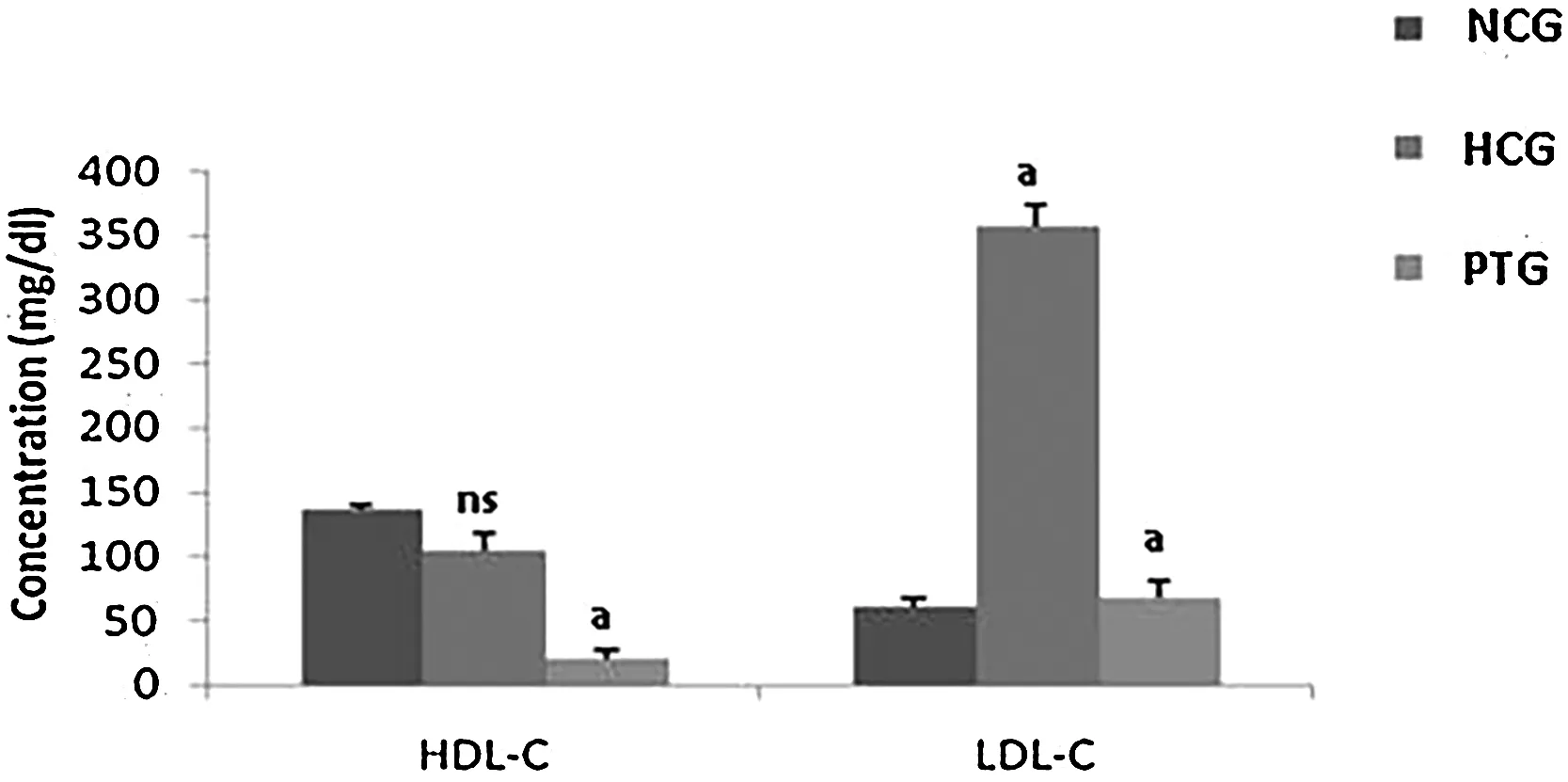
Fig.5.Effect of basil phenolic extract on mice plasma HDL and LDLcholesterol after 24 h treatment.
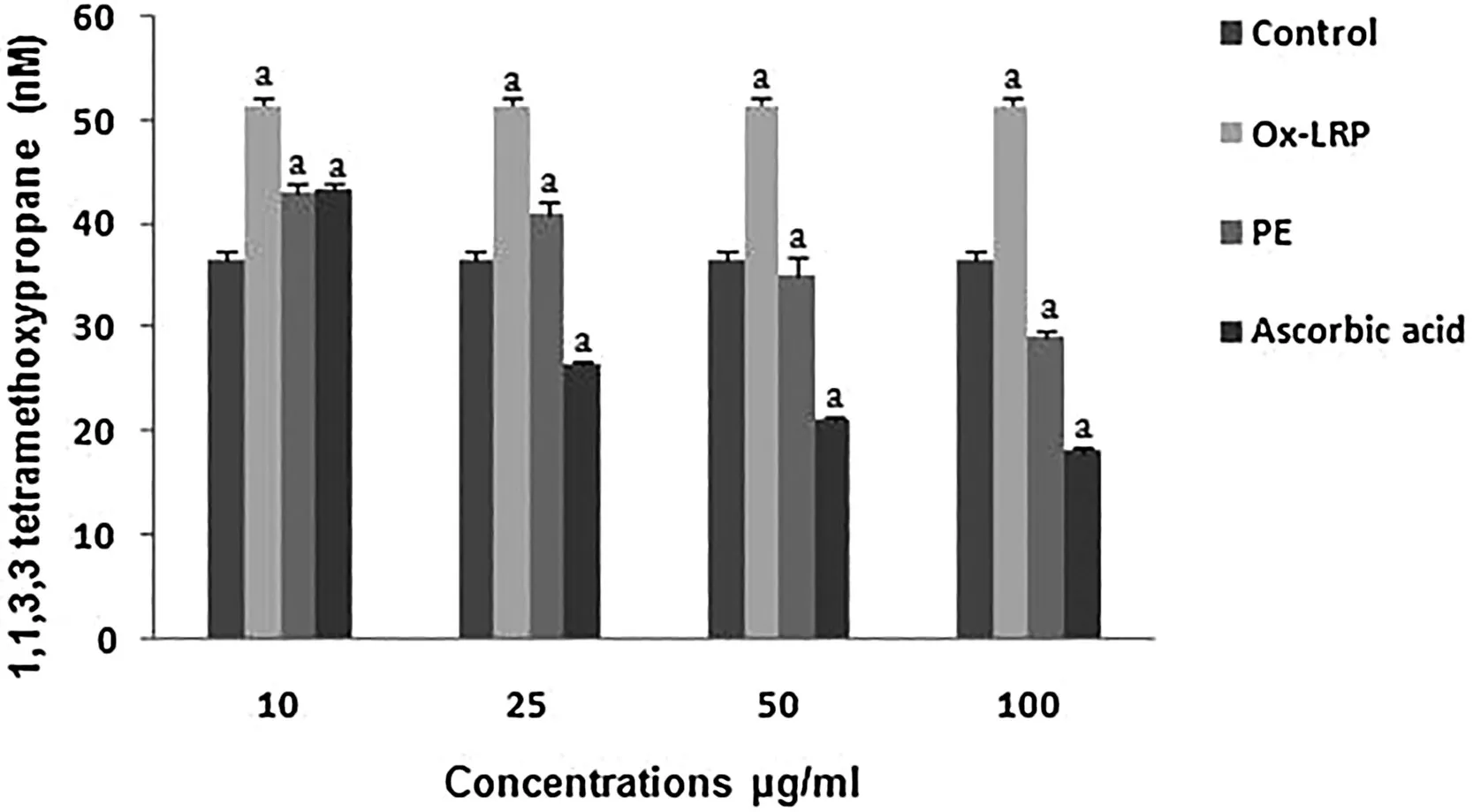
Fig.6.Effect of basil phenolic extract on lipoprotein-rich plasma oxidation.
3.4.Effect of basil phenolic extract on the oxidation oflipoprotein-rich plasma
The evaluation of the oxidation products clearly showed that the levels of TBARS were significantl increased in lipoprotein-rich plasma submitted to copper sulphate induction when compared with control (+41%,P<0.001).In contrast,the phenolic extract fromO.basilicumat a doses of 10,25,50 and 100 μg/mL led to suppress the TBARS production by 16% (P<0.001),20% (P<0.001),32% (P<0.001) and 44%(P<0.001),respectively (Fig.6).We note also that the ascorbic acid,used as standard known antioxidant,exerted a marked inhibition oflipoprotein oxidation.In fact,it decreases the production of TBARS by 15.5%(P<0.001),48%(P<0.001),59%(P<0.001)and 65%(P<0.001),respectively at the same doses used above.On the other hand,it appears clearly that ascorbic acid is more efficien than the phenolic extract (P<0.001)(Fig.6).
4.Discussion
The development of hyperlipidemia in animal models by using Triton WR-1339 is a strategy widely followed in a number of experimental studies [17].This nonionic surfactant inhibits the enzymatic activity oflipoprotein lipase,resulting in the accumulation of total cholesterol,triglycerides and very low density lipoprotein in plasma[18].In the present work,we followed the same strategy using a murine model injected with Triton WR-1339 to investigate the hypolipidemic effect of phenolic extract fromO.basilicum.
We observed that the extract significantl decreased the mice plasma total cholesterol.This activity was associated with a diminution in LDL-cholesterol representing the atherogenic fraction[19].As demonstrated by Mbikay et al.,[20],this find ing led us to suggest that the cholesterol-lowering activity of the phenolic extract might be due to the activation of LDL hepatic receptors(B/E)for the fina clearance as bile acids.We suggest also,on the basis of other studies,that the hypolipidemic effect can be explained by other mechanisms involving modulation of enzymes implicated in cholesterol metabolism:HMG-CoA reductase [21],acyl CoA cholesterol acyl transferase (ACAT)[22]and lecithin-cholesterol acyl transferase(LCAT)[23].
Triglycerides play a central role in the regulation oflipoprotein interactions to maintain lipid metabolism.These lipids are not directly atherogenic but represent an important marker of atherosclerosis risk [24].The elevated plasma triglyceride concentrations have been also associated with cholesterol esterificatio and very atherogenic LDL deposits [25,26].Our experimental study shows that the phenolic extract fromO.basilicumsignificantl reduced triglycerides levels.This lowering activity can be explained by the enhancement of the plasma lipoprotein lipase and hepatic lipase activities as shown with other plant extracts[27].
Ontheotherhand,freeradicalswereshowntocauseoxidative modificatio of biomolecules contributing to oxidative stress which is believed to be the origin of a many diseases including atherosclerosis[3].The suppression of the oxidative modifica tion of plasma lipid and low density lipoprotein by antioxidants constituted one of the major targets of many anti-atherogenic agents preventing atherosclerosis and related coronary artery disorder[28].In this regards,natural antioxidants can scavenge and react with free radicals,and then neutralize their destructive effect against biomolecules.Dietary phenolics may help to provide protection against atherosclerosis by contributing,along with endogenous antioxidants to the total antioxidant defense system of the human body.Besides,many experimental investigations have demonstrated that phenolic compounds from diet,medicinal and aromatic plants possess high antioxidant potential due to their free hydroxyl groups and protect efficientl against free radical-related pathologies [29].Our experimental study demonstrated that phenolic extract from sweet basil has exerted a preventive effect against lipoprotein-rich plasma oxidation.As demonstrated by others,phenolic compounds may scavenge free radicals and then stop chain reaction oflipid oxidation[30].They may also chelate prooxidant metal ion enhancing free radical production and preserve the HDL-associated paraoxonase activity preventing low density lipoprotein oxidation[31,32].
The HPLC analysis of the extract led as to identify 4 phenolic acids:caftaric acid,chicoric acid,rosmarinic acid and cafeic acid.We note also that the rosmarinic acid represents the major compound in the extract and can be strongly implicated in the observed biological activities.Our result accords with the analysis reported by Kwee and Niemeyer,the authors showed thatO.basilicumcontains the same phenolic acids[32].
We conclude that this work provides an important biological activities of the culinary herbO.basilicum.The plant is rich in rosmarinic acid which can be the major compound,acting alone or in synergy with other phenolic acids,responsible for the hypolipedimic and antioxidant activities.These results could be exploited to develop a natural preparation able to prevent hyperlipidemia and atherosclerosis.
Conflicts ofinterest
The authors declare no conflict ofinterest.
Acknowledgment
The authors would like to thank El mostapha BEDRAOUI for helping in animal care.
- 食品科学与人类健康(英文)的其它文章
- About the Beijing Academy of Food Sciences
- Toxicological studies of Caesalpinia sappan wood derived dye in Wister albino rats
- Reversal of acetaminophen-generated oxidative stress and concomitant hepatotoxicity by a phytopharmaceutical product
- Quantificatio of phenolic compounds and antioxidant capacity of an underutilized Indian fruit:Rayan[Manilkara hexandra(Roxb.)Dubard]
- GUIDE FOR AUTHORS
- Ketogenic diets and Alzheimer’s disease

